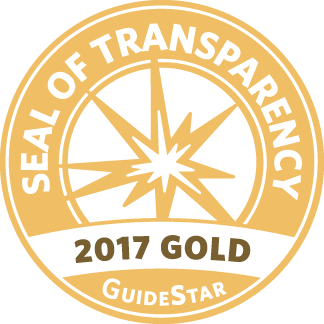Overview of Paid Sick Time Laws in the United States:
Custom Comparison Results
Return to Paid Sick Time Laws Home | Search Paid Sick Time Laws | Export page as PDF
| Arizona | Berkeley | California | Connecticut | District of Columbia | Emeryville | Los Angeles | Maryland | Massachusetts | Michigan | Minneapolis, MN | Montgomery County, MD | New Jersey | New York | New York City, NY | Oakland | Oregon | Philadelphia, PA | Pittsburgh, PA | Rhode Island | Saint Paul, MN | San Diego | San Francisco | Santa Monica | Seattle, WA | Tacoma, WA | Vermont | Washington | |
| Rate at which workers earn paid sick time? | 1 hour for every 30 hours worked | 1 hour for every 30 hours worked | 1 hour for every 30 hours worked. | 1 hour for every 40 hours worked | In businesses with 24 or fewer workers: 1 hour for every 87 hours worked. In businesses with 25-99 workers (and workers in a restaurant or bar with 1-99 workers who regularly receive tips to supplement a base wage below the minimum wage): 1 hour for every 43 hours worked. In businesses with 100 or more workers: 1 hour for every 37 hours worked | 1 hour for every 30 hours worked. | 1 hour for every 30 hours worked | 1 hour for every 30 hours worked (for both paid and unpaid sick time, as described below). | 1 hour for every 30 hours worked (for both paid and unpaid sick time, as described below) | 1 hour for every 35 hours worked. | 1 hour for every 30 hours worked (for both paid and unpaid sick time, as described below) | 1 hour for every 30 hours worked (for both paid and unpaid sick time, as described below) | 1 hour for every 30 hours worked. | 1 hour for every 30 hours worked (for both paid and unpaid sick time, as described below). | 1 hour for every 30 hours worked. | 1 hour for every 30 hours worked or 1 and 1/3 hours for every 40 hours worked (for both paid and unpaid sick time, as described below). | 1 hour for every 40 hours worked (for both paid and unpaid sick time, as described below) | 1 hour for every 35 hours worked | 1 hour for every 35 hours worked (for both paid and unpaid sick time, as described below). | 1 hour per 30 hours worked within Saint Paul, MN. | 1 hour for every 30 hours worked | 1 hour for every 30 hours worked. | 1 hour for every 30 hours worked | In businesses with 250 or more employees, at least 1 hour for every 30 hours worked. In businesses with fewer than 250 employees, at least 1 hour for every 40 hours worked. | 1 hour for every 40 hours worked. | 1 hour for every 52 hours worked. | 1 hour for every 40 hours worked | |
| Amount of paid sick time that can be earned under the law per year? (Note: All of these paid sick time laws make it clear that these laws establish a minimum requirement, and employers can provide greater or more generous paid sick time benefits to their workers.) | Workers in businesses with 15 or more workers: 40 hours. Workers in businesses with fewer than 15 workers: 24 hours. | Workers in businesses with 25 or more workers: up to 72 hours. Workers in businesses with fewer than 25 workers: up to 48 hours | Employers may cap the amount of paid sick time a worker earns at 80 hours or 10 days. Employers may also cap the amount of paid sick time a worker can use each year at 40 hours or 5 days (with a “day” based upon your regular work hours) in a year, whichever is greater. | Up to 40 hours of paid sick time a year | Workers in businesses with 24 or fewer workers: up to 3 days a year. Workers in businesses with 25-99 workers (and workers in a restaurant or bar who regularly receive tips to supplement a base wage below the minimum wage): up to 5 days a year. Workers in businesses with 100 or more workers: up to 7 days a year. The number of workers is determined by the average monthly number of full-time equivalents in the prior year. A day is considered the length of the worker’s customary work day or shift. | Workers in businesses with more than 55 workers: up to 72 hours. Workers in businesses with 55 or fewer workers: up to 48 hours. Note: The enforcing agency has interpreted the law to cap how much paid sick time can be earned—but not on an annual basis. Once a worker reaches his or her earnings cap (i.e., banks the maximum amount of earned sick time as indicated in the chart) and uses paid sick time, the worker once again begins to earn paid sick time back up to this same cap. | Up to 48 hours a year | Employers with 15 or more employees may cap the amount of sick time a worker earns at 40 hours of paid sick time per year. Employers with 14 or fewer employees shall at least provide an employee with 40 hours of unpaid, job-protected sick time per year. Employers may cap the amount of sick time a worker can use at 64 hours per year. | Workers in businesses with 11 or more workers: up to 40 hours of paid sick time a year. Workers in businesses with fewer than 11 workers: up to 40 hours of unpaid, job-protected sick time a year | Up to 40 hours per year. | Workers in businesses with 6 or more workers: up to 48 hours a year. Workers in businesses with 5 or fewer workers: up to 48 hours of unpaid, job-protected sick time a year. New employers, other than certain chain businesses, only have to provide unpaid, job-protected sick time in their first 12 months after hiring their first worker (this “new business” provision only applies for 5 years after the law’s effective date). | Workers in businesses with 5 or more workers: up to 56 hours a year. Workers in businesses with fewer than 5 workers: up to 32 hours of paid sick time and 24 hours of unpaid, job-protected sick time. | Up to 40 hours a year. | Workers in businesses with 100 or more workers: 56 hours per year. Workers in businesses with between 5 and 99 workers: 40 hours per year. Workers in businesses with 4 or fewer workers and a net income of more than 1 million dollars in the previous tax year: 40 hours per year. Workers in businesses with 4 or fewer workers and a net income of 1 million dollars or less in the previous tax year: 40 hours of unpaid, job-protected sick time per year. | Workers in businesses with 10 or more workers: up to 72 hours. Workers in businesses with fewer than 10 workers: up to 40 hours. Note: The enforcing agency has interpreted the law to cap how much paid sick time can be earned—but not on an annual basis. Once a worker reaches his or her earnings cap (i.e., banks the maximum amount of earned sick time as indicated in the chart) and uses paid sick time, the worker once again begins to earn paid sick time back up to this same cap. | Larger businesses: Workers in businesses with at least 10 or more workers: up to 40 hours of paid sick time a year Employers located in Portland: If a business is located in Portland (including maintaining any office, store, restaurant, or establishment in the city) and has at least 6 workers anywhere in Oregon, workers have the right to earn up to 40 hours of paid sick time a year. Smaller businesses: Workers in businesses with fewer than 10 workers (or fewer than 6 workers if the business is located in Portland): up to 40 hours of unpaid, job-protected sick time a year. Special rule for some home care workers: Certain home care workers who are hired directly by the client but whose compensation is funded in whole or part by payments from the State, county, or a public agency must receive up to 40 hours of paid time off a year (including but not limited to sick time). | Workers in businesses with 10 or more workers: up to 40 hours a year. Workers in businesses with fewer than 10 workers: up to 40 hours of unpaid, job-protected sick time a year. Certain chain establishments must provide paid sick time regardless of the number of workers in an establishment. | Workers in businesses with 15 or more workers: up to 40 hours a year. Workers in businesses with fewer than 15 workers: up to 24 hours a year, although in the first year after the law goes into effect, this time will be unpaid (thereafter it will be 24 hours of paid sick time a year for workers in these small businesses). | As of 2019, workers in businesses with 18 or more workers can earn up to 32 hours of paid sick time; workers in businesses with fewer than 18 workers can earn up to 32 hours of unpaid, job-protected sick time. Each year after 2019, workers in businesses with 18 or more workers can earn up to 40 hours of paid sick time; workers in businesses with fewer than 18 workers can earn up to 40 hours of unpaid, job-protected sick time. | Up to 48 hours of paid sick time per year. | Employers may cap the amount of paid sick time a worker earns at 80 hours. Employers may also cap the amount of paid sick time a worker can use each year at 40 hours. | Workers in businesses with 10 or more workers: up to 72 hours. Workers in businesses with fewer than 10 workers: up to 40 hours. Note: The enforcing agency has interpreted the law to cap how much paid sick time can be earned—but not on an annual basis. Once a worker reaches his or her earnings cap (i.e., banks the maximum amount of earned sick time as indicated in the chart) and uses paid sick time, the worker once again begins to earn paid sick time back up to this same cap. | As of January 1, 2018, workers in businesses with 26 or more workers: up to 72 hours a year. Workers in businesses with 25 or fewer workers: up to 40 hours a year. | No explicit cap on how much sick time can be earned or used in a year. However, as described below, employers may cap the amount of unused sick time workers may carry over to the subsequent year. | No explicit cap on how much sick time can be earned or used in a year. However, as described below, employers are not required to allow a worker to carry over more than 40 hours of unused paid sick time a year. | From 1/1/2017 to 12/31/2018: Up to 24 hours a year. After 12/31/2018: Up to 40 hours a year. Note: new businesses will not be subject to the paid sick time law for a period of one year after hiring their first worker. | No explicit cap on how much sick time can be earned or used in a year. However, as described below, employers are not required to allow a worker to carry over more than 40 hours of unused paid sick time a year. | |
| When do workers begin to earn paid sick time? | At the commencement of employment. Earned paid sick time can be used as it is accrued, except that an employer may require a worker to wait until the 90th calendar day after commencing employment before using accrued earned paid sick time. | On the first day of employment, but workers aren’t entitled to use paid sick time until 90 calendar days after commencement of employment. | At the commencement of employment, but workers aren’t entitled to use paid sick time until the 90th day of employment. As noted earlier, the law covers a worker when the worker works in California for more than 30 days within a year from the commencement of employment. | At the commencement of employment, but workers aren’t entitled to use paid sick time until the 680th hour of employment. | At the commencement of employment, but workers aren’t entitled to use paid sick time until after 90 days of employment. | On the first day of employment, but workers aren’t entitled to use paid sick time until the 90th day of employment. | On the first day of employment. A worker is entitled to use paid sick time beginning on the 90th day of employment. As noted earlier, the law covers a worker when the worker works in Los Angeles for the same employer for 30 days or more within a year from the commencement of employment. | At the commencement of employment. However, workers aren’t entitled to use earned sick time during the first 106 calendar days of employment. | At the date of hire, but workers aren’t entitled to use sick time until the 90th calendar day following commencement of employment. | At the commencement of employment, but workers aren’t entitled to use earned sick time until the 90th calendar day after commencing employment. | At the commencement of employment, but workers aren’t entitled to use sick time until the 90th calendar day after commencement of employment. | At the commencement of employment, but workers can be required to wait 90 days before using their sick time. | At the commencement of employment. However, workers aren’t entitled to use earned sick time until the 120th calendar day after employment commenced. | At the commencement of employment. Earned sick time can be used as it is accrued. | On the first day of employment, but workers aren’t entitled to use paid sick time until after 90 calendar days of employment. | At the commencement of employment. Workers aren’t entitled to use earned sick time until the 91st calendar day of employment with the employer. | At the commencement of employment, but workers aren’t entitled to use sick time until after 90 calendar days of employment. | At the commencement of employment, but workers aren’t entitled to use sick time until the 90th calendar day after employment commenced. | At the commencement of employment (for both paid and unpaid sick time). However, workers aren’t entitled to use sick time until after 90 days of employment. Temporary workers are entitled to use sick time beginning on the 180th calendar day following commencement of their employment. Seasonal workers are entitled to use sick time beginning on the 150th calendar day following commencement of their employment. | At the commencement of employment. Workers are entitled to use their paid sick time as it is accrued. | At the commencement of employment, but workers aren’t entitled to use paid sick time until 90 calendar days following the commencement of employment. | At the commencement of employment, but workers aren’t entitled to use paid sick time until the 90th day of employment. | At the commencement of employment, but workers aren’t entitled to use paid sick time until after the first 90 days of employment (or sooner if provided for in the employer’s policies). | At the commencement of employment, but workers aren’t entitled to use paid sick time until the 90th calendar day after employment commenced. | At the commencement of employment, but workers aren’t entitled to use paid sick time until the 90th calendar day after employment commenced. | At the commencement of employment or when their employer becomes covered by the law, whichever is later, but workers can be required to wait up to 1 year before using their accrued paid sick time. | Although not specified, reads as if accrual begins at the commencement of employment. Workers are entitled to use accrued paid sick time beginning on the 90th calendar day after the commencement of employment. |







